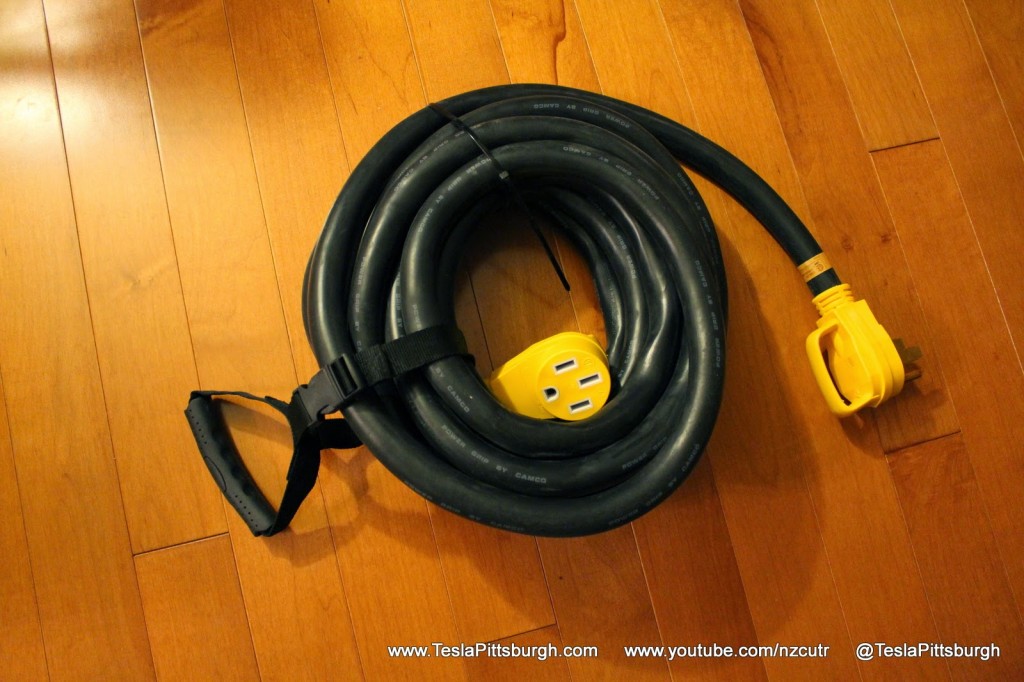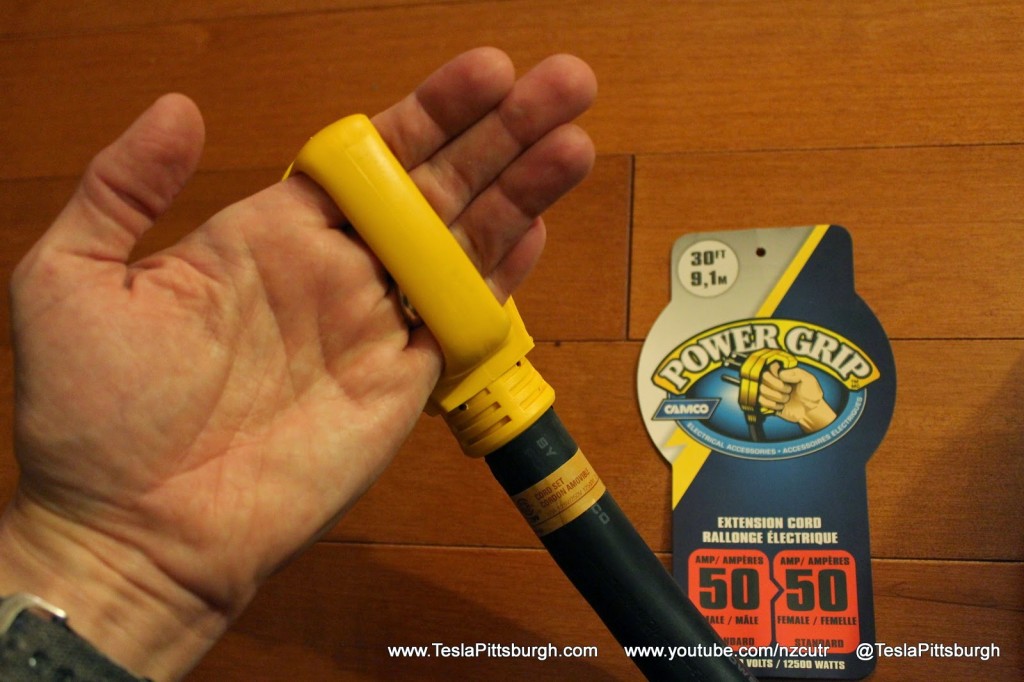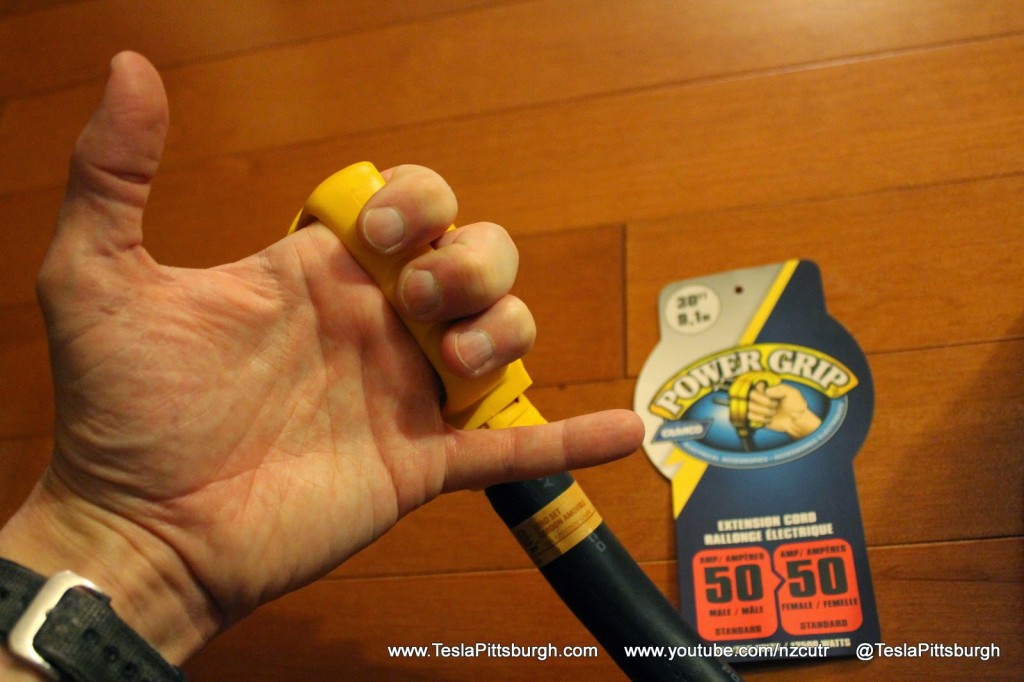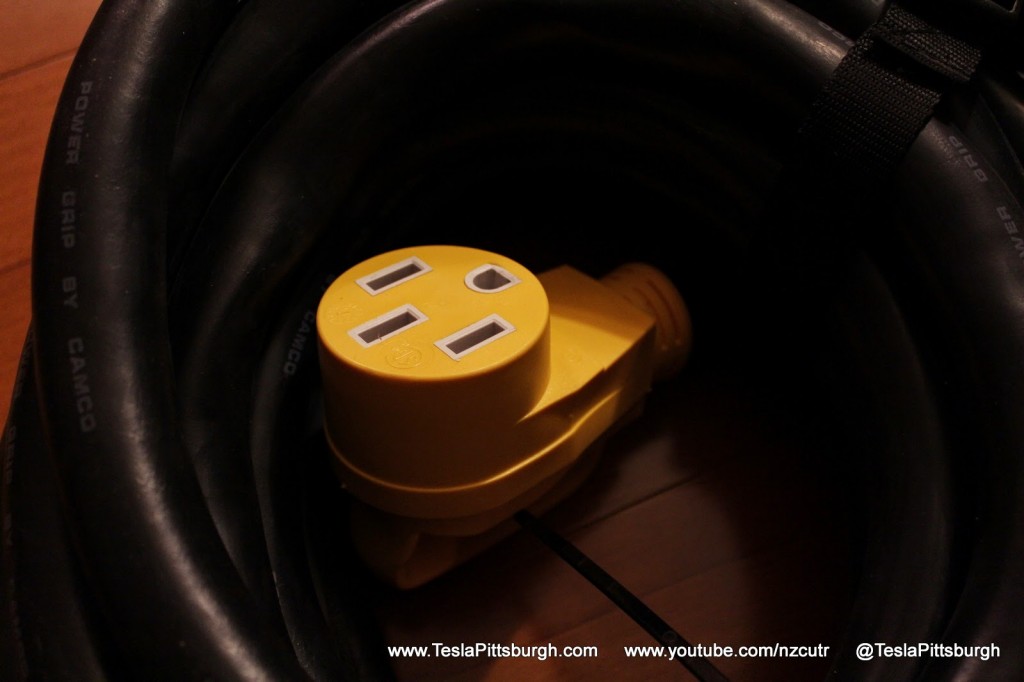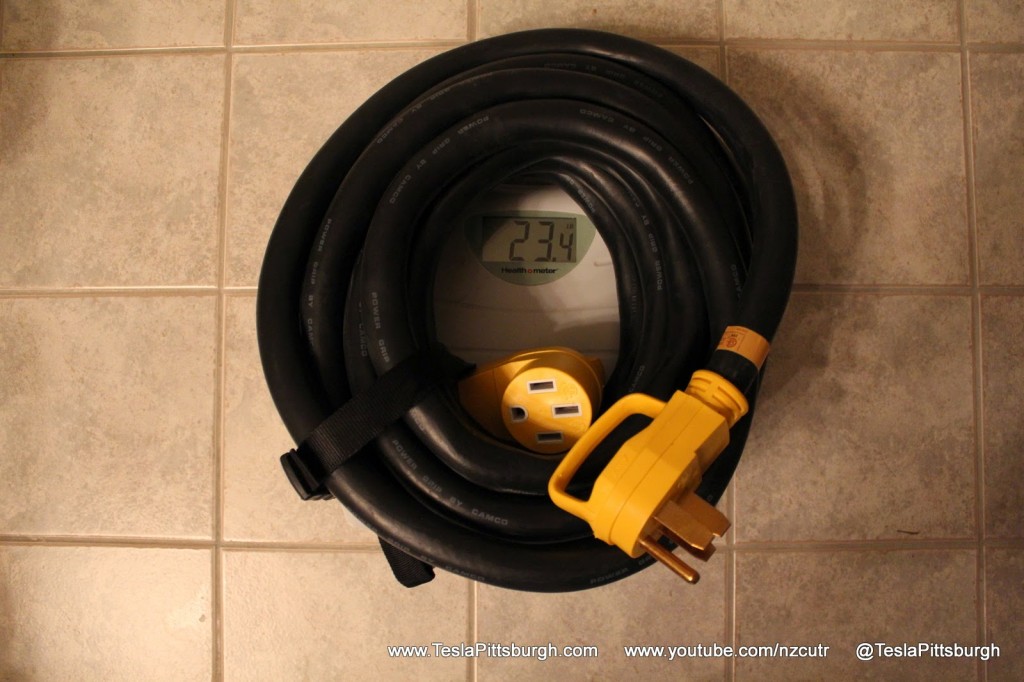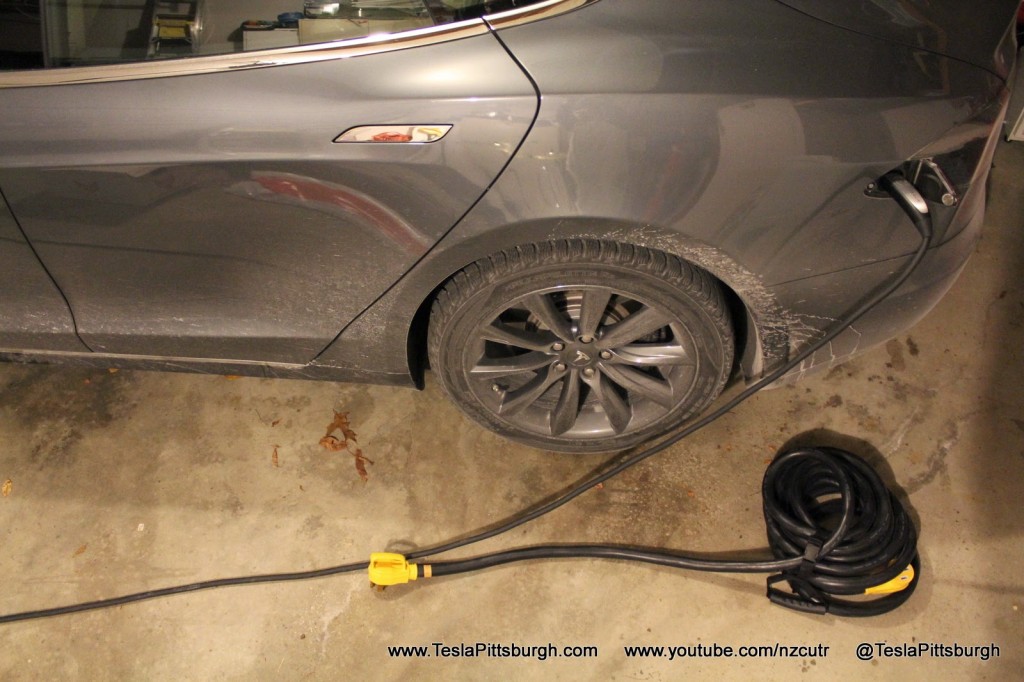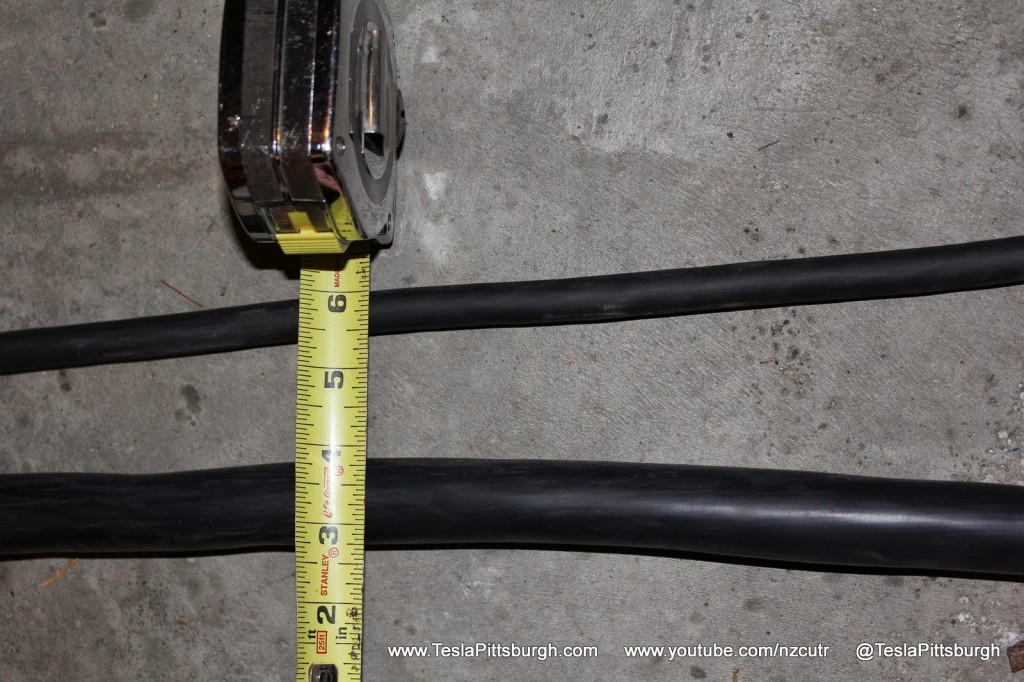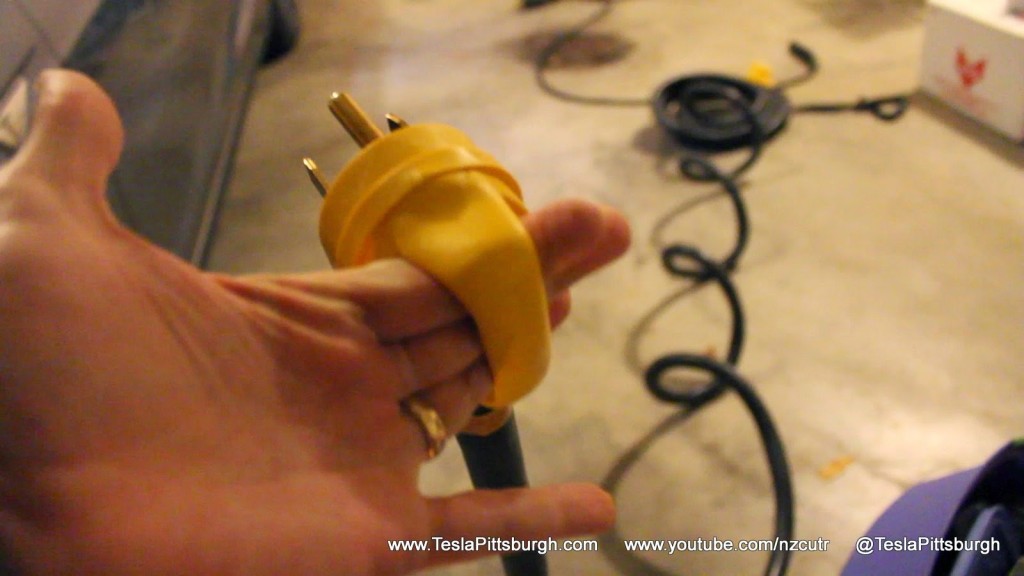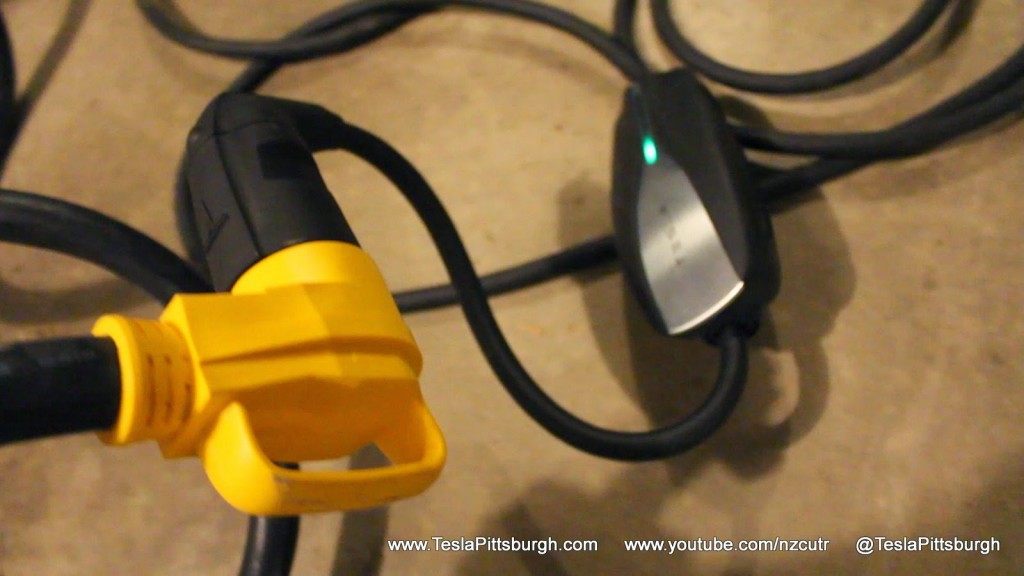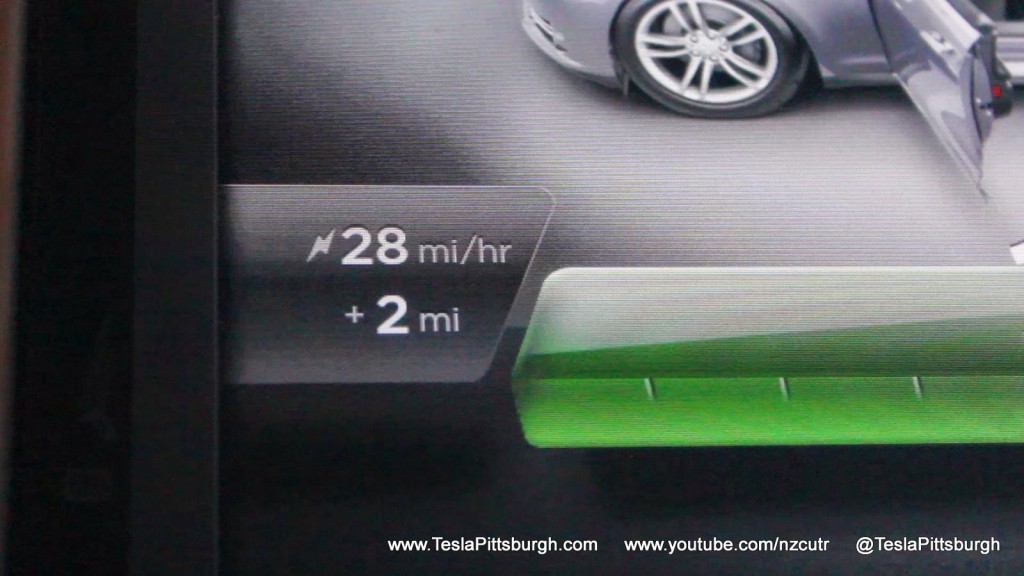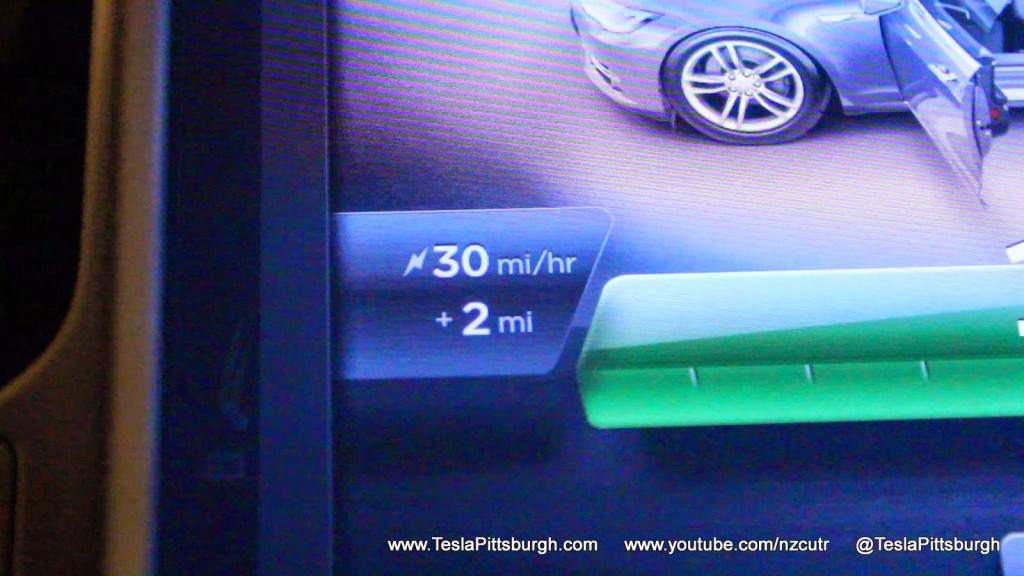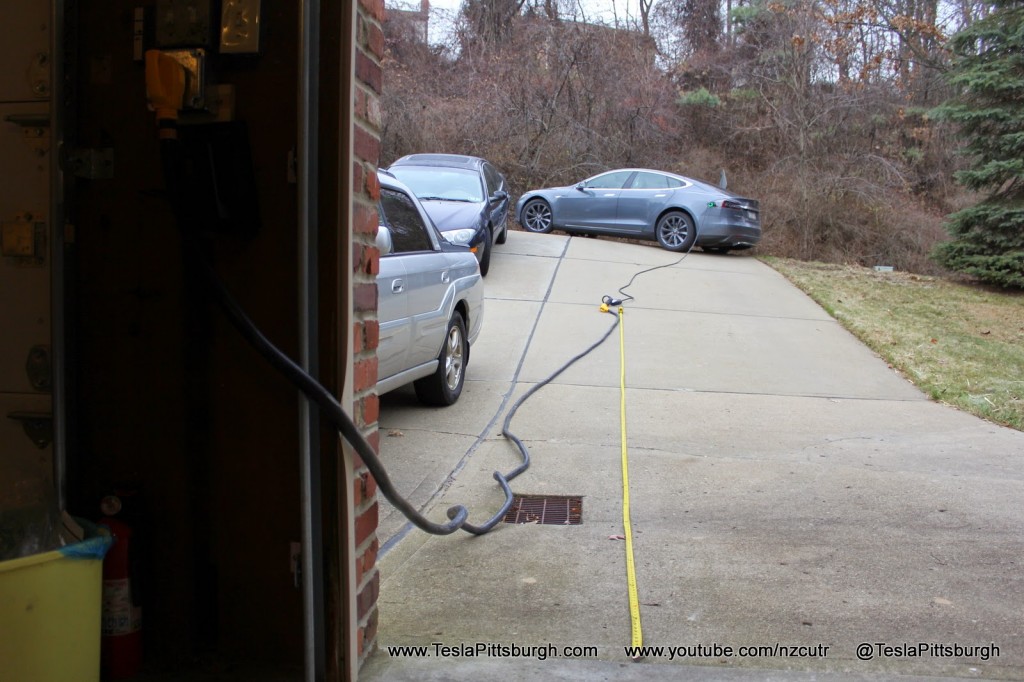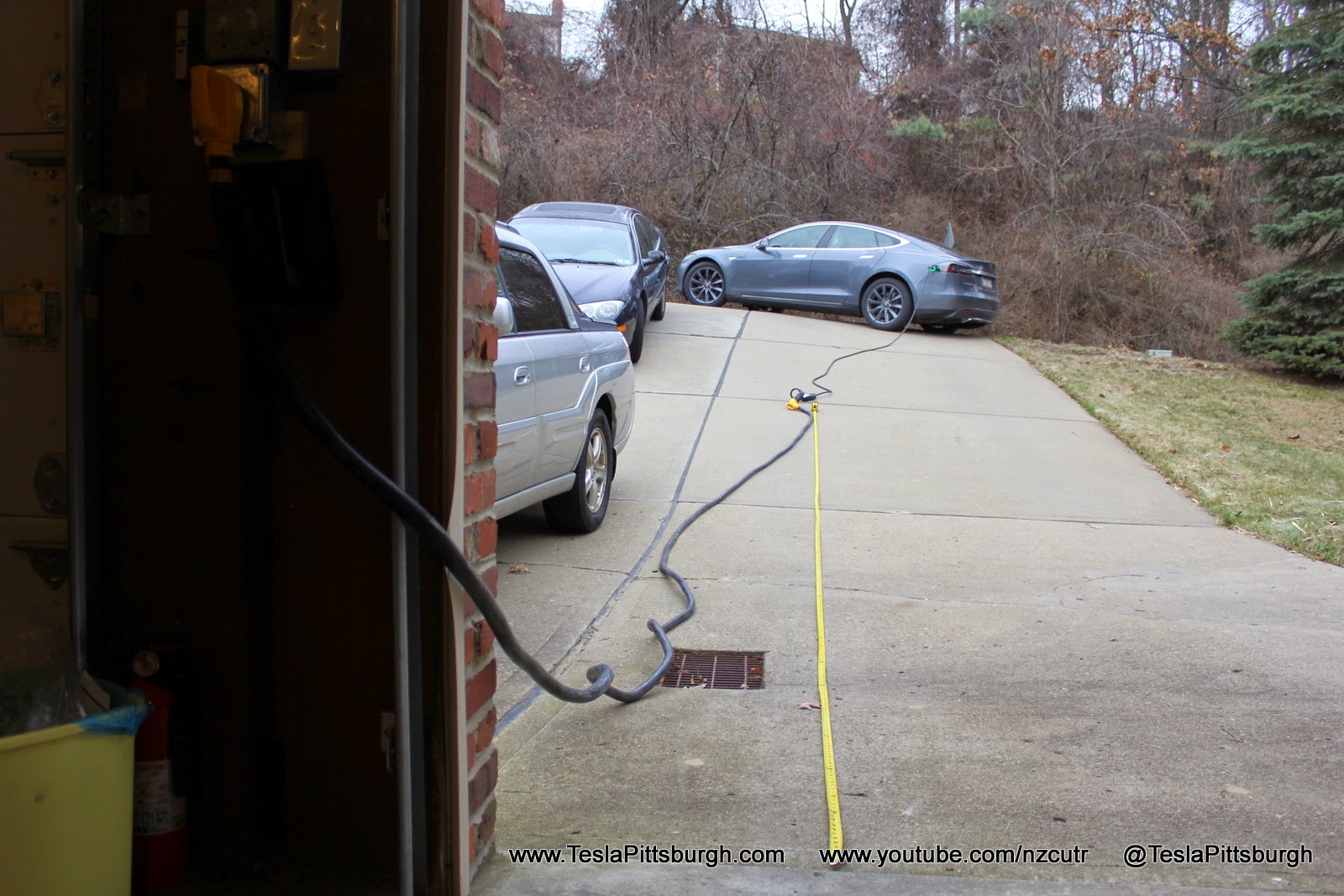

DIY
Tesla UMC Extension Cord via Camco 50 AMP 30′ PowerGrip
The gas crowd has a leg up on us. There, I said it. Every time they go to fuel up their cars they find each dispenser to be road-accessible, surrounded by ample room to park and the hose on the dispenser can reach either side of their car. But wait– don’t go trading in your Tesla just yet! You can still run over the river and through the woods to Grandma’s house… just remember to pack this:
Whether you’re digging behind bushes to access your parents’ dryer outlet or carefully inching your Model S close to rusted farm equipment in hopes of reaching an ancient welder’s plug at your crazy uncle’s place, remember that the juice you use is cheaper than gas and the car is a lot more fun! What you need then is a way to bring the power more conveniently to your car… and this is the solution.
The Ultimate Tesla UMC Extension Cord
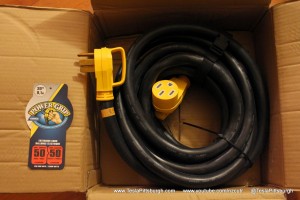 Camco makes a number of heavy-duty electrical extension cords and plug adapters and is based in North Carolina. However, Tesla does not endorse the use of anything other than their own HPWC or UMC, just so we’re clear. Unfortunately, my friend’s HPWC won’t reach from Pennsylvania to New York and the UMC is similarly limited. Even in my own garage it can barely make it from the nose of the car to the tail and many times parking away from home but within the car’s own length of a plug isn’t possible.
Camco makes a number of heavy-duty electrical extension cords and plug adapters and is based in North Carolina. However, Tesla does not endorse the use of anything other than their own HPWC or UMC, just so we’re clear. Unfortunately, my friend’s HPWC won’t reach from Pennsylvania to New York and the UMC is similarly limited. Even in my own garage it can barely make it from the nose of the car to the tail and many times parking away from home but within the car’s own length of a plug isn’t possible.
Given that you will sooner or later have to “plug’r in” farther than your cord will reach, the question is how to do so safely. Let’s rule out a Doc Brown inspired hood-mounted solution and try to match as closely as we can the wiring that the outlet itself would have. A fully permitted and legit 50 amp outlet (NEMA 14-50) is what most of us have for home charging. Depending on local codes you might have 8 gauge wire in there but typically codes will dictate 6 gauge for a continuous 40 amp draw while charging. The Camco PowerGrip cord uses the same 6 gauge wire wrapped in an impressively rugged covering. Same wire, same plugs, same performance. Your Tesla won’t even know the difference from home cooking.
Let’s talk numbers (with apologies to vegan electrical engineers for my pedestrian approach– though admittedly they are a small demographic). If you’re looking to buy a nice steak you can shop by the pound or by the cut. Different prices apply to different cuts, obviously, but the hunk of meat you need remains the same. The Camco cord costs about $100 for 30′ which is about $3.35/foot (accounting for some loss due to the plug ends). Current prices in my area for similar gauge, by-the-roll 6-gauge electrical cable (same stuff I use to juice my garage 50 amp plug) works out to $1.78/foot. A handy fellow could probably make a similar cord for about a third less cost… but it won’t have the same rugged construction and won’t be as durable and safe. Copious amounts of electrical and duct tape might approach the durability but by then you’ve emptied your 401k on tape. That’s not nearly as much fun as a trip to Paris in your 90s. The premium cost to have Camco do it for you is only about 20% without accounting for your own labor. That’s a pretty modest upcharge for such a well-built product. A different cut of steak that’s worth spending a few bucks more to get.
A Deeper Look at the Camco 50 AMP 30′ Extension Cord
Camco makes this same extension cord in several lengths and in smaller gauges (like for a 30 amp run). There’s also a host of adapters and you can craft a very impressive knot of connections if you really want to freak out the spectators or impress your girlfriend. My wife frowns on both approaches so we’ll be keeping this review to the cord itself.
A “touted” feature of the Camco on its labels are the “PowerGrip” handles on the ends. Look at that muscled hand asserting it’s dominance over all things electric!
Reality bites a little bit in this case. I’m not a huge guy and the PowerGrip couldn’t fit my 4 fingers in it without visions of the fire department being summoned to pry me free with their Hurst tool. You certainly could not wrestle the cord with any degree of comfort using it this way.
Take a moment to sit cross-legged on the floor and summon up your inner Californian (you’ve surely done this already if you’re a Tesla owner in a snow state): “Ommm…..Surf’s up, dude!” — and there, you’ve got it, the proper grip for the PowerGrip. If you want to show off your sophistication, keep the pinky extended like it’s high afternoon tea.
The 90-degree plug angles are potentially the biggest flaw in the product. I’ve seen more than one stove outlet installed so close to the floor that plugging in wouldn’t allow for enough clearance to bend the stiff Camco cord. It’s a small possibility but worth asking about before you dismantle your Aunt’s kitchen in the middle of holiday feast preparations. A bigger problem is the angle on the female end. Whereas the male end provides some strain relief when plugged into a conventional outlet, the female end just entangles the cord and costs you a little length. I think it increases the chance for it being a tripping hazard and probably stresses the connection with the UMC unnecessarily. A straight plug would be better for anyone who can’t quite “get there” otherwise– even better would be a way to positively lock the connection so it can’t be worked loose.
Thirty feet of power cord weighs in at 23 1/2 pounds, but since the Model S is over 16′ long it doesn’t make much sense to bother with a shorter cord. After all, if the problem can be solved by simply turning the car around you’re not really gaining a lot of capability. The shorter cords are still bulky to travel with but do have a weight advantage… but if you’re running off to Grandma’s house you’re going to weigh more coming home anyway. Potentially a lot more if your family can cook like mine. If not, then a too short extension cord would be the least of your life’s disappointments and I want you to instead picture me enjoying my gravy and pie… which I will ship to you for a generous donation towards a P85D.
Speaking of bulk (and NOT speaking of my unspeakably dirty Tesla), check out the size differential between the two cords. Even from Sasquatch height the circumference is massively bigger comparatively.
Grab a tape measure and you’ll find your eyes don’t deceive you– the Camco is at least double the thickness of the Tesla cord. That should put to rest any concerns of the wire overheating under prolonged charging but it does come at a cost: flexibility.
Stretching the cord out leaves lots of stubborn coils that will have you twisting the night away to take advantage of the full length. I also have grave concerns about trying to jam a cold-frozen cord back into the car after a night’s charge– but again, both of these issues are not the fault of Camco. Any extension cord of this size will have similar drawbacks.
This is a quality piece of kit and you’ll have peace-of-mind dragging and scraping over all sorts of unimaginable obstacles that would shred the Tesla cord.
All plugged in you can see the 90 degree angle that works so well on the wall outlet end becomes a confused electrical interchange when connected to the UMC adapter. They’re both angled the opposite way from each other– not a huge issue unless the resulting loss of nearly a foot of potential length is the difference between driving away or being marooned with a pouty face.
With the PowerGrip linked in between wall power and the UMC there’s a price to be paid in energy loss on such a long run. The car continues to pull 40 amps continuously and there are no overheating concerns but the amount of power getting to the battery is down to 28 mph charge rate.
Just to verify I wasn’t “misremembering” I redid the charge with the PowerGrip removed and at the same benchmark I was back to pulling 30 mph as a charge rate. The 2 mph power loss doesn’t seem like a deal-breaker to me. From completely empty to completely full that would be a difference of 40 minutes, but as a destination charging solution I would expect to be sleeping anyway. 40 extra minutes? Bring it! I’d still be sleeping off the prior night’s meal anyway.
To better illustrate what kind of range extender the Camco cord really is, I moved Serena out from her cozy garage to the end of the cord plus the UMC. The added distance gets me to the top of our “scary driveway”– Oh, it is — you should see it through the windshield on an icy/snowy day with the house ready to catch you at the bottom. This does illustrate another use– and using the cord as an inclement weather solution might be appealing to some of you (and it certainly is rugged enough for that) but for me, the likelihood of getting sideswiped by a snow plow or sledding car means I’ll be doing this dangerous descent no matter what the weather.
Putting a 25′ tape measure down for scale, you can see that the cord really does live up to the 30′ claim. Add in the UMC (which is about 18′) and a margin for safety-slackness and you’re still counting a good 45′ total length. That’s a large buffer that I can’t imagine being insufficient for any destination/travel charging obstacles you might encounter.
Indeed, the only major downside is the possibility of repacking a cold cord. Temperatures were in the 40s the day I tested this particular setup and even after a few minutes it was noticeably stiffening. I predict jamming it back into a compact coil could require more than one helper as you both wrestle this “Anaconda” snake back into its tie-strap. Cord handling problems would also be true for any other cord, of course. For more details on this product, check out my video review of the Camco 50 AMP 30′ PowerGrip:
Thanks for visiting us here!
CLICK to read more at www.TeslaPittsburgh.com, check out the videos on our YouTube channel at www.YouTube.com/NZCUTR and follow us on Twitter: https://twitter.com/TeslaPittsburgh.

DIY
Tesla Model 3 pickup “Truckla” gets updates and a perfectly wholesome robot charger
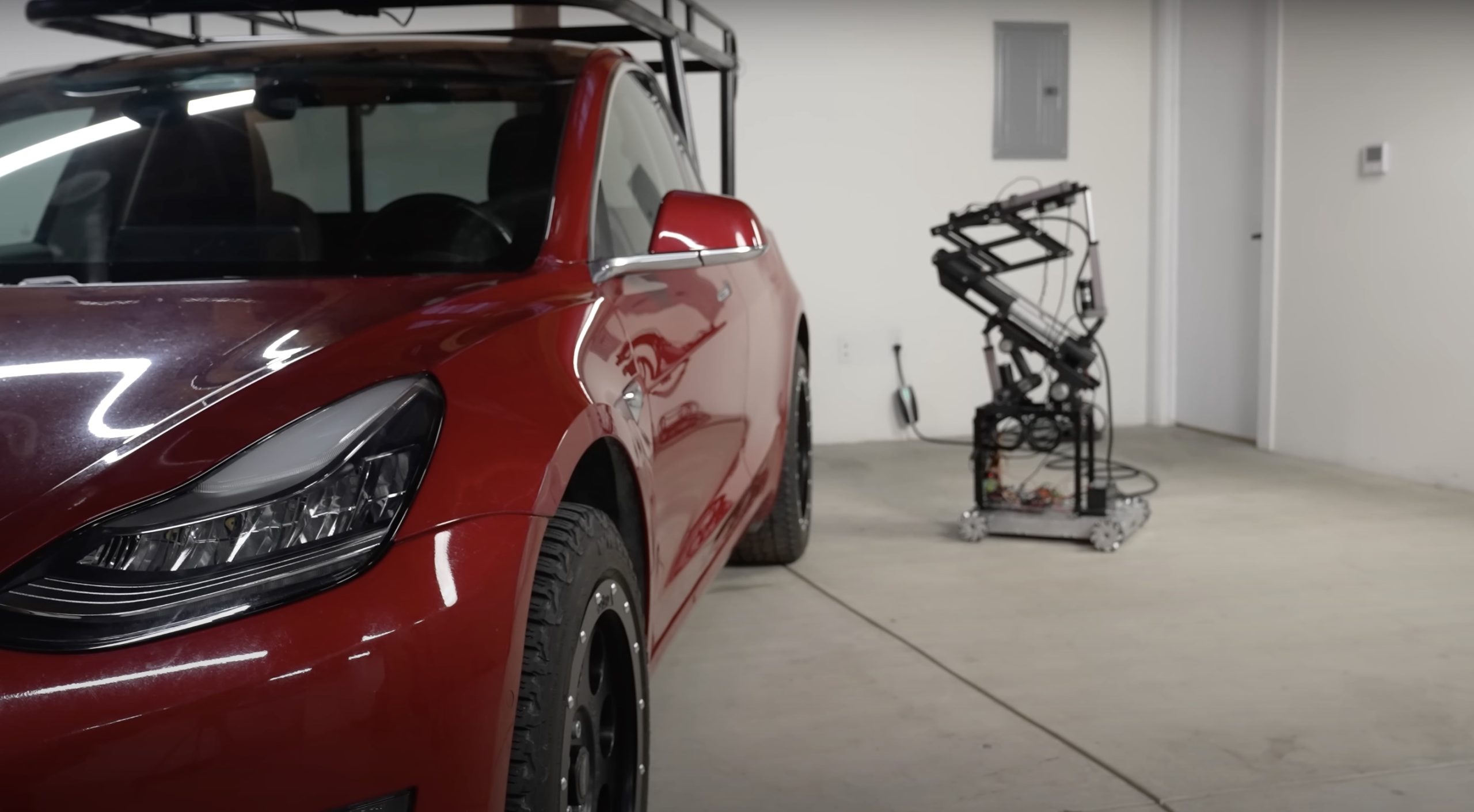
Back in 2019, YouTuber Simone Giertz, the self-proclaimed “Queen of Sh*tty Robots,” created a one-off Tesla Model 3 build that took the automotive world by storm. Fondly dubbed as “Truckla,” Giertz noted that the vehicle was actually her dream car — as crazy as that may sound.
Now almost four years later, the YouTuber posted an update on Truckla. And just like every other big project that one probably started, Giertz stated that she actually stopped working on Truckla when the vehicle was about 80% complete. The car is driving though, but a lot of stuff was not really working very well.
Thus, for her Truckla update, Giertz shared how most of her Model 3 pickup truck conversion was essentially completed. Truckla got a lot of detailing done, she got a slight lift, and she now has a functional tailgate. One has to admit, Truckla’s tailgate is pretty darn cool.
The “Queen of Sh*tty Robots” also opted to give Truckla a friend in the form of an automatic robot charger. Unlike Tesla’s rather interesting snake charger from years past, Truckla’s charger would come in the form of a rover, thanks to her friends at robotics platform Viam. Giertz aptly named Truckla’s robot charger friend “Chargela,” which is an appropriate name for such an invention.
Also true to form for Giertz, Chargela’s first encounter with Truckla was just a tiny bit awkward. One could say that Chargela may have just been a little bit nervous on his first try without human hands helping him. Most importantly, the system did work, so Giertz would likely keep using Chargela for her Model 3 pickup.
Teslas are very tech-heavy vehicles, so projects like Giertz’s Truckla are always remarkable. The fact that the Model 3 works perfectly fine despite having a good chunk of it cut off and turned into a pickup truck bed is mighty impressive any way one looks at it. Overall, Truckla will always be one of the coolest Tesla DIY projects to date, so any updates about the vehicle are always appreciated.
Truckla’s nearly four-year update can be viewed below.
Don’t hesitate to contact us with news tips. Just send a message to simon@teslarati.com to give us a heads up.
DIY
Tesla fan creating ‘CyberRoadster’ using Model 3 Performance parts in epic DIY build
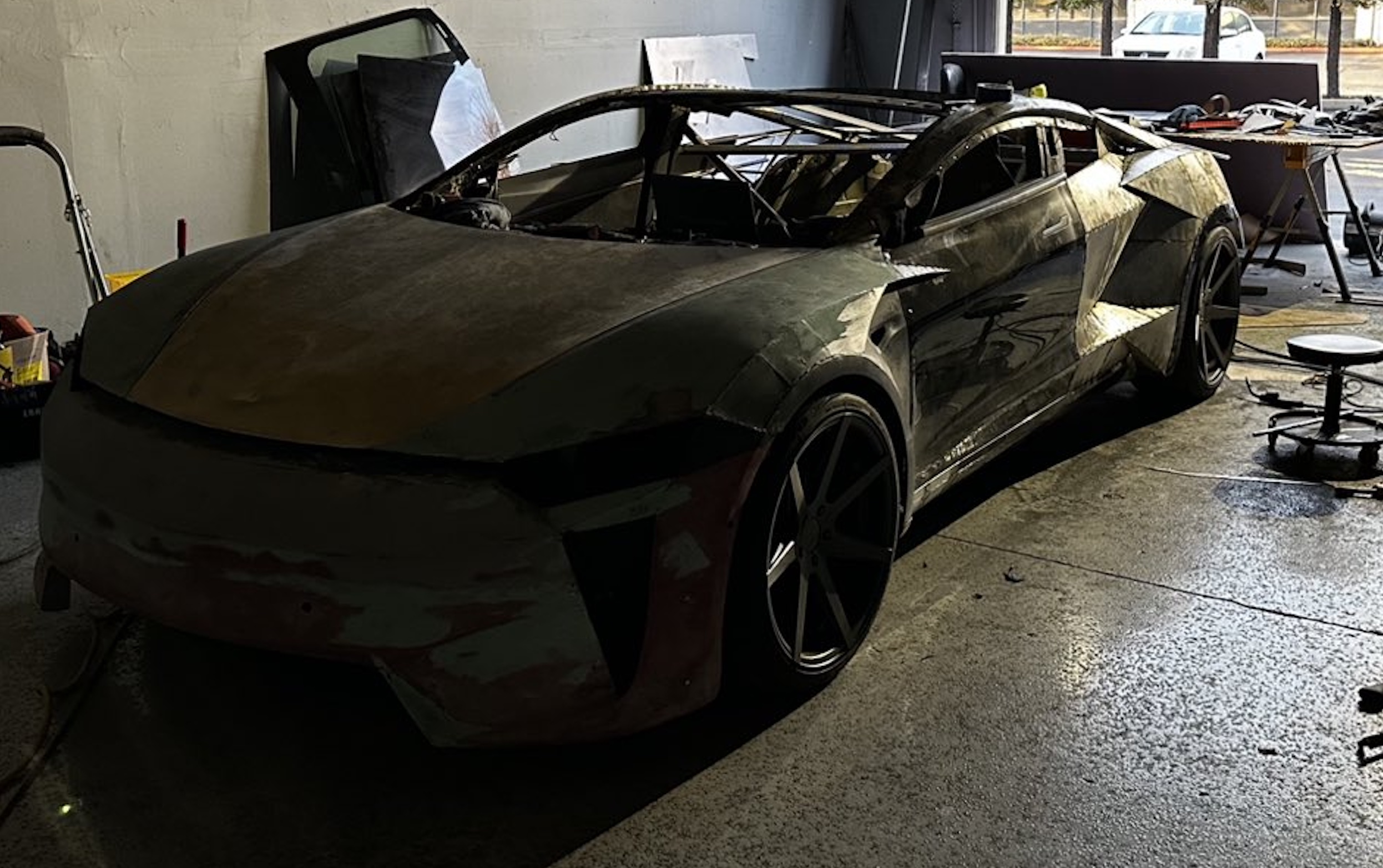
A Tesla owner is taking his hobby and love for electric vehicles to new levels by creating what could only be described as one of the coolest EV-related DIY projects to date. The idea for the project is simple: what happens when you cross a supercar with the Cybertruck? You end up with a two-seater CyberRoadster.
Tesla owner David Andreyev, who goes by the username @Cyber_Hooligan_ on Twitter, has spent the last few months creating a Cybertruck-inspired version of the next-generation Roadster made from a salvaged Model 3 Performance. Starting with a Model 3 Performance is an inspired choice, considering that it is Tesla’s first vehicle that has a dedicated Track Mode.
A look at Andreyev’s YouTube channel, which can be accessed here, shows the meticulous build that the Tesla owner has implemented on the project car. What’s particularly cool about the CyberRoadster is the fact that it’s being built with parts that are also from other Tesla vehicles, like its front bumper that came from a new Model S. Recent videos suggest that the project car’s rear bumper will be from a new Model S as well.
The journey is long for Andreyev, so the completion of the CyberRoadster will likely take some more time. Despite this, seeing the Tesla owner’s DIY journey on such an epic build is more than satisfying. And considering that the CyberRoadster is evidently a labor of love from the Tesla owner, the final results would likely be extremely worth it.
There’s a lot of crazy Tesla modifications that have been done as of late. But some, as it is with a lot of things on the internet these days, have become more silly gimmicks than serious automotive projects. Fortunately, car enthusiasts like Andreyev, who just happen to also love electric vehicles, are taking it upon themselves to create one-of-a-kind EVs that would surely capture the attention of anyone on the road.
Check out the latest video in the CyberRoadster’s creation below.
Don’t hesitate to contact us with news tips. Just send a message to simon@teslarati.com to give us a heads up.
DIY
Tesla owner ‘charges’ Model 3 with homemade solar panel trailer
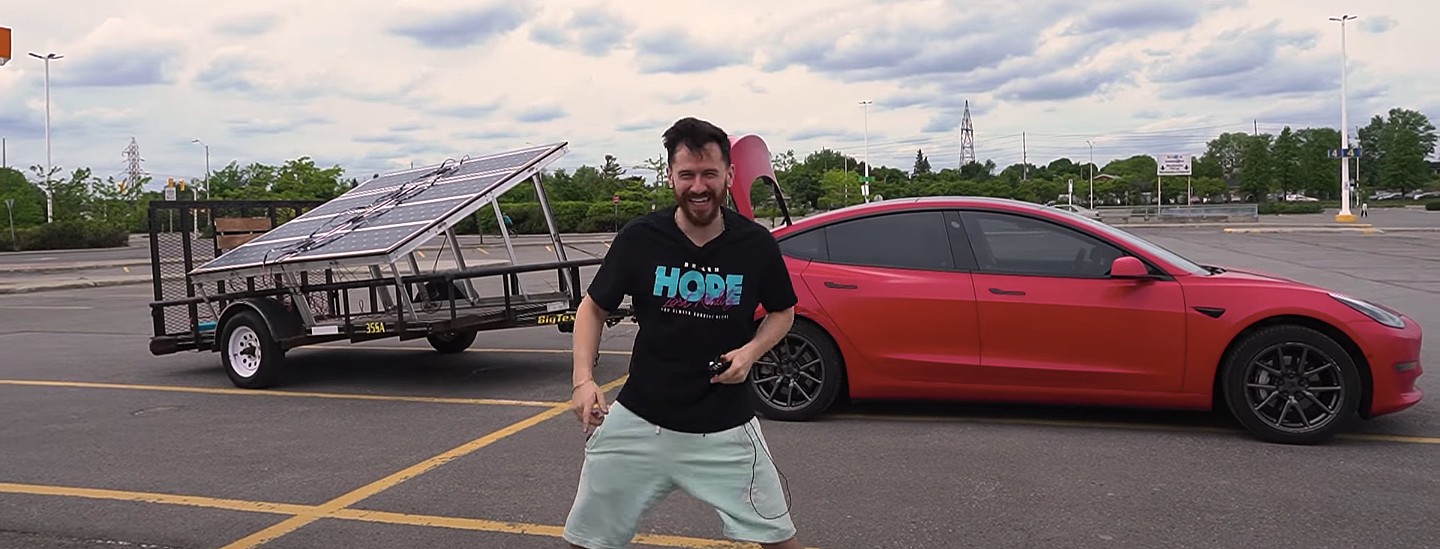
A Tesla owner has demonstrated a rather novel way to charge his Model 3. In a recent video, Sean Callaghan of the ItsYeBoi YouTube channel opted to use a series of off-the-shelf solar panel sheets onto a towable trailer to create a mobile charging unit for his all-electric sedan.
Callaghan planned to use only the sun and the solar sheets purchased from e-commerce platform Wish to charge his Model 3. The solar panel sheets would collect energy from the sun and transfer it to a control panel. The control panels were connected to batteries that would hold the energy—the batteries connected to an inverter, which would then charge the Tesla Model 3.
The entire assembly would provide the Model 3 with about 800 watts of energy on a completely sunny day. However, Callaghan shot the video when weather was overcast, so the entire solar panel trailer build only managed to provide around 300 watts throughout the YouTube host’s test.
To put this into perspective, a 100 volt home wall outlet provides 1.4 kilowatts of power, or 1,400 watts. Therefore, the 300-watt solar panel assembly built by Callaghan was producing less than 25% of the energy of a typical wall outlet. This is pretty marginal compared to Tesla’s 250-kilowatt V3 Superchargers, which provides 250,000 watts, or about 833 times as much power as the makeshift solar panel build.
However, Callaghan’s goal was not to charge the vehicle quickly. He explained the idea came from a previous video where he used a $5,000 Wish-purchased wind turbine to charge his Model 3. He wanted to test the effectiveness and efficiency of the system, which was questionable due to the time it would take to charge the battery fully.
The Model 3 battery pack is 78 kWh, and with Callaghan’s 300-watt system charging his electric vehicle, it would take 260 hours to supply the Tesla’s battery to full capacity.
In the past, electric vehicle enthusiasts have asked Tesla CEO Elon Musk why the company’s vehicles do not contain solar glass roofing, which would charge the car while the owner is driving. Musk has explained that the efficiency of this idea is challenging and likely would not provide an ample amount of range.
When asked about the idea of putting solar panels on the top of Tesla’s vehicles in 2017, Musk responded that the idea was “Not that helpful, because the actual surface of the car is not that much, and cars are often inside. The least efficient place to put solar is on the car.” It also would not be cost-effective for Tesla because “the cost of the panels and electronics, R&D and assembly would never pay for itself in the life of the vehicle, compared to charging from the wall in your garage,” Quartz noted.
That being said, Tesla plans to implement solar panels onto the motorized tonneau of the upcoming Cybertruck. The idea was discussed on Twitter when Musk stated that the optional feature would add “15 miles per day, possibly more” when parked in the sunlight. Also, fold-out solar wings could help capture enough solar energy for 30 to 40 miles a day.
Watch Sean Callaghan’s video of his makeshift solar panel trailer below.
